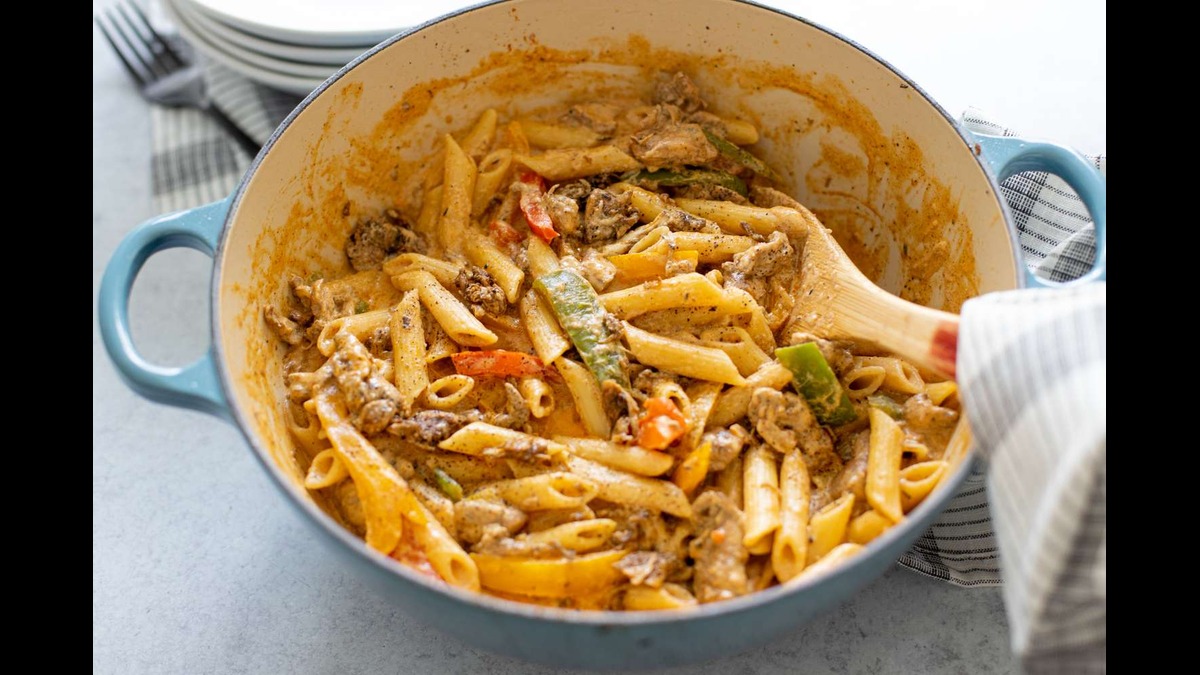Easy Guide to Cooking Rasta Pasta for Beginners1

Table of Contents
Introduction
Rasta Pasta is a vibrant and flavorful dish that has been captivating food enthusiasts around the world. This unique fusion of Italian and Caribbean cuisine combines the rich, creamy texture of pasta with the bold, spicy flavors of jerk seasoning. In this comprehensive guide, we will delve into the origins of Rasta Pasta, its cultural significance, the ingredients that make it special, and provide you with a step-by-step recipe to create this delicious dish at home. Whether you’re a seasoned chef or a culinary novice, this article will equip you with everything you need to know about Rasta Pasta.
Origins of Rasta Pasta
Rasta Pasta originated in the Caribbean, specifically Jamaica, where culinary innovation is a hallmark of the local cuisine. The dish is a testament to the island’s rich history and diverse cultural influences. It blends Italian pasta, a staple of Western cuisine, with Jamaican jerk seasoning, a quintessential element of Caribbean cooking. This fusion results in a unique and delectable dish that embodies the spirit of culinary creativity.
The Rasta Influence
The name “Rasta Pasta” is inspired by Rastafarian culture, which is deeply rooted in Jamaica. Rastafarians are known for their Ital diet, which emphasizes natural, unprocessed foods. While traditional Ital cooking does not include meat, often incorporates jerk chicken or shrimp. The vibrant colors of the dish—typically green, yellow, and red—reflect the Rastafarian flag and add to its cultural significance.
Key Ingredients
The choice of pasta is essential in Rasta Pasta. Penne, fettuccine, or rigatoni are popular choices because they hold the sauce well and provide a hearty base for the dish. Gluten-free pasta can also be used for those with dietary restrictions.
Jerk Seasoning
Jerk seasoning is the heart of Rasta Pasta. This aromatic blend of spices includes allspice, thyme, scotch bonnet peppers, garlic, and ginger. The combination of these ingredients creates a spicy, smoky flavor that defines the dish.
Vegetables
A variety of colorful vegetables are used in Rasta Pasta, such as bell peppers (red, green, and yellow), onions, and tomatoes. These vegetables not only add flavor and nutrition but also enhance the visual appeal of the dish.
Protein
While traditional Ital cooking may omit meat, many versions of Rasta Pasta include jerk chicken, shrimp, or even tofu for a protein boost. The protein is typically marinated in jerk seasoning and then grilled or sautéed to infuse it with flavor.
Cream Sauce
The creamy sauce in Rasta Pasta is often made with heavy cream or coconut milk. Coconut milk adds a touch of sweetness and complements the spicy jerk seasoning perfectly, creating a well-balanced dish.
Nutritional Benefits
Rasta Pasta is not only delicious but also offers a range of nutritional benefits. The vegetables provide essential vitamins and minerals, while the protein source adds necessary amino acids. The spices in jerk seasoning, such as allspice and scotch bonnet peppers, contain antioxidants and have anti-inflammatory properties. Additionally, if coconut milk is used, it provides healthy fats that can support heart health.
Step-by-Step Recipe: How to Make Rasta Pasta
Instructions
Cook the Pasta: Begin by cooking the pasta according to the package instructions. Drain and set aside.
Prepare the Protein: If using chicken or shrimp, marinate it in jerk seasoning for at least 30 minutes. For tofu, press and cube it, then marinate similarly. Heat olive oil in a large skillet over medium-high heat. Cook the chicken, shrimp, or tofu until fully cooked and set aside.
Sauté the Vegetables: In the same skillet, add more olive oil if needed. Sauté the bell peppers and onions until they are tender and slightly caramelized, about 5-7 minutes. Add the garlic and cook for an additional 1-2 minutes.
Make the Sauce: Reduce the heat to medium and add the heavy cream or coconut milk to the skillet. Stir in the jerk seasoning and let the sauce simmer for 5 minutes, allowing the flavors to meld together.
Combine Everything: Add the cooked pasta and protein back into the skillet. Toss everything together until well combined and heated through. If using Parmesan cheese, stir it in until melted and incorporated into the sauce.
Season and Serve: Taste and adjust the seasoning with salt and pepper as needed. Garnish with fresh parsley or cilantro and serve hot.
Variations of Rasta Pasta
To make a vegetarian or vegan version of Rasta Pasta, simply replace the protein with tofu or tempeh and use coconut milk instead of heavy cream. Nutritional yeast can be used as a dairy-free alternative to Parmesan cheese.
Gluten-Free Rasta Pasta
For a gluten-free version, use gluten-free pasta. Ensure that all other ingredients, including jerk seasoning, are certified gluten-free to avoid cross-contamination.
Low-Carb Rasta Pasta
For those following a low-carb diet, zucchini noodles (zoodles) or spaghetti squash can be used as a substitute for traditional pasta. This variation still captures the essence of Rasta Pasta while being suitable for low-carb lifestyles.
Serving Suggestions
Rasta Pasta is a versatile dish that can be served in various ways. It pairs well with a fresh green salad or steamed vegetables for a balanced meal. For a heartier option, serve it with garlic bread or plantains. The dish can also be enjoyed as a standalone meal, thanks to its rich and satisfying